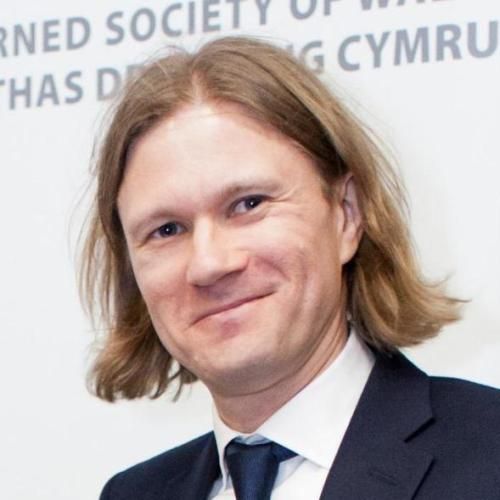Overview
My research concerns problems at the intersection between Differential Geometry and Partial Differential Equations, particularly special geometric structures that arise in the context of holonomy in Riemannian geometry.
I am currently the Deputy Director of the Simons Collaboration Special Holonomy in Geometry, Analysis, and Physics. My colleague here at Duke, Robert Bryant, is the Collaboration Director and currently Chair of the Mathematics department.
Currently, I am particularly interested in special types of 7-dimensional spaces called G2-holonomy manifolds, or G2-manifolds for short. These spaces also arise naturally in modern theoretical physics in the 11-dimensional theory known as M theory. To get from 11 dimensions down to 4 dimensions it is necessary to 'compactify' on a 7-dimensional space and to preserve the maximal degree of (super)symmetry this 7-dimensional space should have G2-holonomy. In fact, realistic 4-dimensional physics appears to demand singular G2-holonomy spaces and trying to construct compact singular G2-holonomy spaces is one of my current research projects.
Manifolds with special holonomy also come equipped with special submanifolds, called calibrated submanifolds, and special connections on auxiliary vector bundles, called generalised instantons. I am particuarly interested in associative and coassociative submanifolds in G2-holonomy spaces and special Lagrangian submanifolds in Calabi-Yau spaces. In the past I have also studied singular special Lagrangian n-folds.
I am currently the Deputy Director of the Simons Collaboration Special Holonomy in Geometry, Analysis, and Physics. My colleague here at Duke, Robert Bryant, is the Collaboration Director and currently Chair of the Mathematics department.
Currently, I am particularly interested in special types of 7-dimensional spaces called G2-holonomy manifolds, or G2-manifolds for short. These spaces also arise naturally in modern theoretical physics in the 11-dimensional theory known as M theory. To get from 11 dimensions down to 4 dimensions it is necessary to 'compactify' on a 7-dimensional space and to preserve the maximal degree of (super)symmetry this 7-dimensional space should have G2-holonomy. In fact, realistic 4-dimensional physics appears to demand singular G2-holonomy spaces and trying to construct compact singular G2-holonomy spaces is one of my current research projects.
Manifolds with special holonomy also come equipped with special submanifolds, called calibrated submanifolds, and special connections on auxiliary vector bundles, called generalised instantons. I am particuarly interested in associative and coassociative submanifolds in G2-holonomy spaces and special Lagrangian submanifolds in Calabi-Yau spaces. In the past I have also studied singular special Lagrangian n-folds.
Current Appointments & Affiliations
Professor of Mathematics
·
2019 - Present
Mathematics,
Trinity College of Arts & Sciences
Education, Training & Certifications
University of Texas, Austin ·
2000
Ph.D.
External Links
Publications and citations from Google Scholar Haskins webpage Simons Collaboration on Special Holonomy in Geometry, Analysis and Physics My lectures in the Simons Collaboration Learned Society of Wales Journal of the London Mathematical Society Special Geometric Structures and Analysis@MSRI/SLMath Fall 2024 My Mathematical Genealogy My mathematical genealogy II Find out what the Simons Collaboration on Special Holonomy is all about


